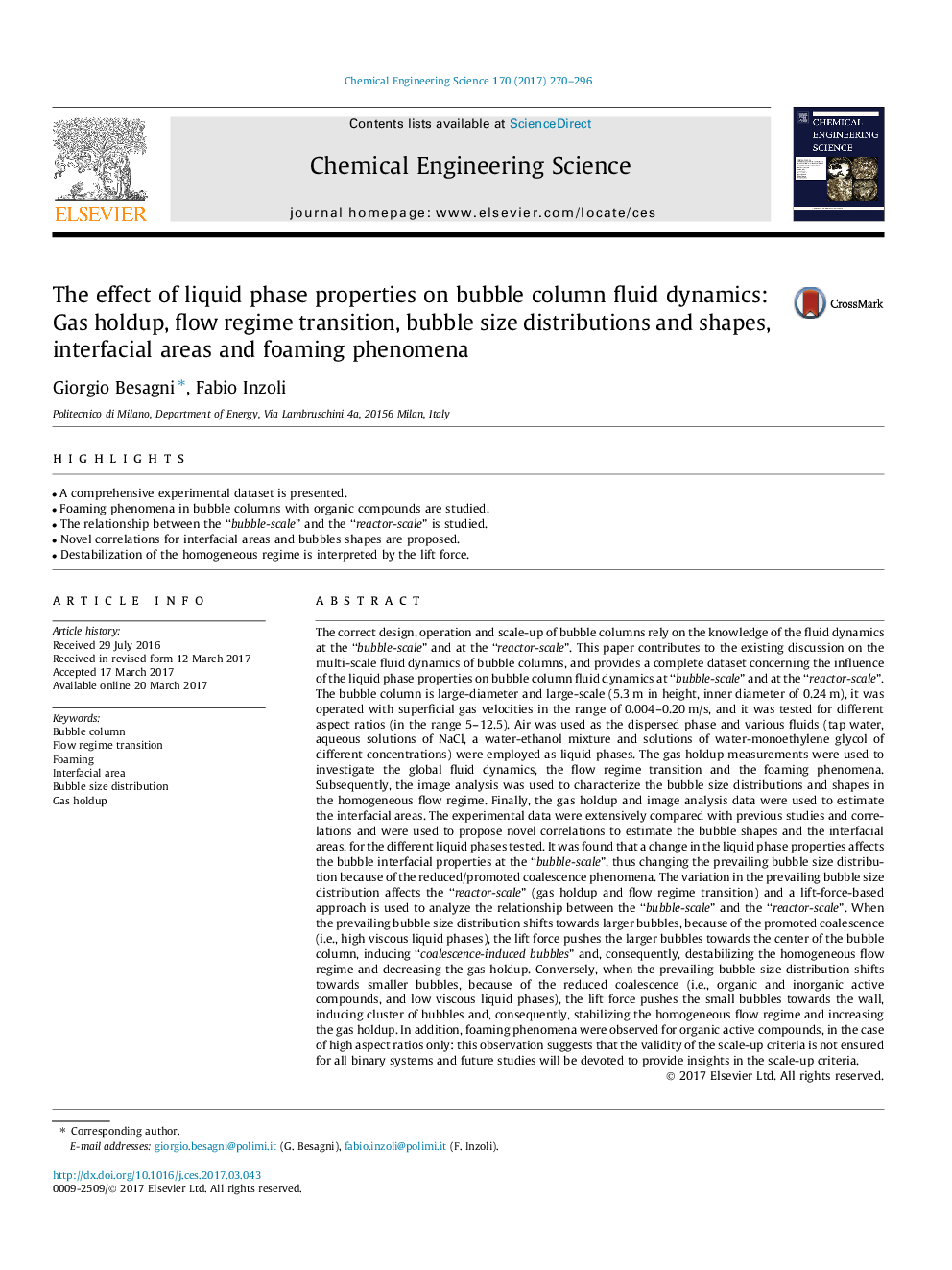| کد مقاله | کد نشریه | سال انتشار | مقاله انگلیسی | نسخه تمام متن |
|---|---|---|---|---|
| 6467237 | 1423249 | 2017 | 27 صفحه PDF | دانلود رایگان |
- A comprehensive experimental dataset is presented.
- Foaming phenomena in bubble columns with organic compounds are studied.
- The relationship between the “bubble-scale” and the “reactor-scale” is studied.
- Novel correlations for interfacial areas and bubbles shapes are proposed.
- Destabilization of the homogeneous regime is interpreted by the lift force.
The correct design, operation and scale-up of bubble columns rely on the knowledge of the fluid dynamics at the “bubble-scale” and at the “reactor-scale”. This paper contributes to the existing discussion on the multi-scale fluid dynamics of bubble columns, and provides a complete dataset concerning the influence of the liquid phase properties on bubble column fluid dynamics at “bubble-scale” and at the “reactor-scale”. The bubble column is large-diameter and large-scale (5.3Â m in height, inner diameter of 0.24Â m), it was operated with superficial gas velocities in the range of 0.004-0.20Â m/s, and it was tested for different aspect ratios (in the range 5-12.5). Air was used as the dispersed phase and various fluids (tap water, aqueous solutions of NaCl, a water-ethanol mixture and solutions of water-monoethylene glycol of different concentrations) were employed as liquid phases. The gas holdup measurements were used to investigate the global fluid dynamics, the flow regime transition and the foaming phenomena. Subsequently, the image analysis was used to characterize the bubble size distributions and shapes in the homogeneous flow regime. Finally, the gas holdup and image analysis data were used to estimate the interfacial areas. The experimental data were extensively compared with previous studies and correlations and were used to propose novel correlations to estimate the bubble shapes and the interfacial areas, for the different liquid phases tested. It was found that a change in the liquid phase properties affects the bubble interfacial properties at the “bubble-scale”, thus changing the prevailing bubble size distribution because of the reduced/promoted coalescence phenomena. The variation in the prevailing bubble size distribution affects the “reactor-scale” (gas holdup and flow regime transition) and a lift-force-based approach is used to analyze the relationship between the “bubble-scale” and the “reactor-scale”. When the prevailing bubble size distribution shifts towards larger bubbles, because of the promoted coalescence (i.e., high viscous liquid phases), the lift force pushes the larger bubbles towards the center of the bubble column, inducing “coalescence-induced bubbles” and, consequently, destabilizing the homogeneous flow regime and decreasing the gas holdup. Conversely, when the prevailing bubble size distribution shifts towards smaller bubbles, because of the reduced coalescence (i.e., organic and inorganic active compounds, and low viscous liquid phases), the lift force pushes the small bubbles towards the wall, inducing cluster of bubbles and, consequently, stabilizing the homogeneous flow regime and increasing the gas holdup. In addition, foaming phenomena were observed for organic active compounds, in the case of high aspect ratios only: this observation suggests that the validity of the scale-up criteria is not ensured for all binary systems and future studies will be devoted to provide insights in the scale-up criteria.
Journal: Chemical Engineering Science - Volume 170, 12 October 2017, Pages 270-296
